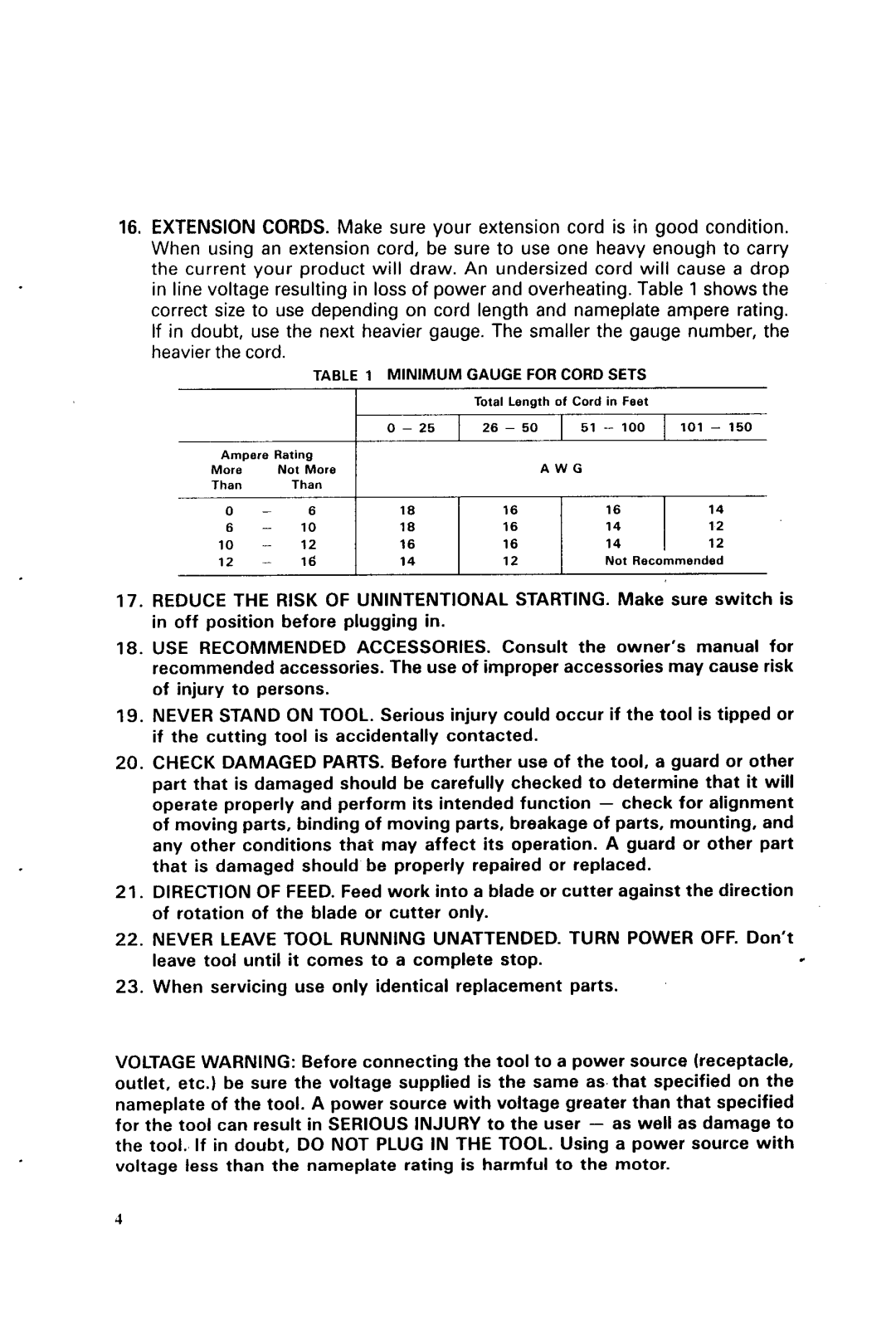
16.EXTENSION CORDS. Make sure your extension cord is in good condition. When using an extension cord, be sure to use one heavy enough to carry the current your product will draw. An undersized cord will cause a drop in line voltage resulting in loss of power and overheating. Table 1 shows the correct size to use depending on cord length and nameplate ampere rating. If in doubt, use the next heavier gauge. The smaller the gauge number, the heavier the cord.
TABLE 1 MINIMUMGAUGE FOR CORD SETS
|
|
|
| Total Length of Cord in Feet |
|
| |
|
| I | 0 - 25 | I 26 - 50 | I 51 - 100 | I | 101 - 150 |
Ampere Rating |
|
| A W G | I |
| ||
More |
| Not M O W |
|
|
| ||
Than |
| Than |
|
| :t |
| |
6 | - | 10 | 18 | 16 | 12 | ||
0 | - | 6 | 18 | 16 |
|
| 14 |
10 | - | 12 | 16 | 16 | 14 |
| 12 |
12 | - | 16 | 14 | 12 | Not Recommended | ||
VOLTAGE WARNING: Before connecting the tool t o a power source (receptacle, outlet, etc.) be sure the voltage supplied is the same as that specified on the nameplate of the tool. A power source w i t h voltage greater than that specified for the tool can result in SERIOUS INJURY t o the user - as well as damage t o the tool. If in doubt, DO NOT PLUG IN THE TOOL. Using a power source w i t h voltage less than the nameplate rating is harmful t o the motor.
